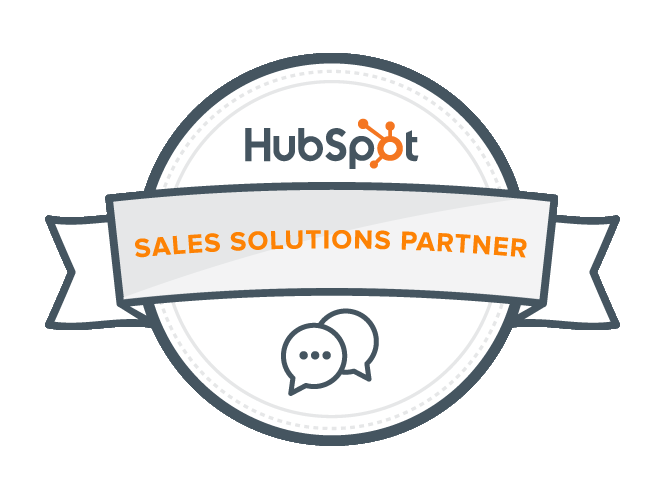The GREAT 8 internet marketing tactics | everything you need to know
Justin Babcock • August 16, 2019
“Getting an audience is hard. Sustaining an audience is hard. It demands a consistency of thought, of purpose and of action over a long period of time.” –Bruce Springsteen
Marketing is a lot like working out. You need to do it consistently. You'll notice little results before others see anything. And if you stick with it, you'll have the revenue growth you always wanted.
Also much like diet and exercise, everyone is trying to sell you an easy fix. Just take this diet pill, just 8 minutes a day. Just order our marketing software, and you'll have everything you ever wanted with little effort. Little effort equals little results.
We are sorry to say, marketing, like working out, is about consistency and a strong foundation.
As outlined below, the GREAT 8 internet marketing tactics will build a foundation for your future marketing success. Just like the gym, it ain't easy, but it is worth it.

Social Media Marketing
So, someone told you how Instagram transformed their business. They are super busy because of their latest LinkedIn campaign, or they are bragging about some other marketing play.
Well, we are entrepreneurs. We love to brag about the successes but tend to leave out the painful path and troubles that got us there. So, we assume everyone else has an easy road while we toil.
So, what do you do? We suggest picking three platforms and start experimenting. That's right, experiment.
See the beauty of getting started is few people will see your message. So, you can post things, revise messaging, and generally get use to the platform. Don't worry about mistakes; no one will see them unless it catches fire. In which case, who cares! You are getting the leads.
Before you know it, you will be building an audience, getting new leads, and be bragging about your new marketing campaign.
For a more in-depth getting started guide, go to our Social Media Marketing Guide.
Need more help? Click here
to schedule a FREE 15-minute consultation with one of our marketing experts.
Blogging
Chances are you've gone to someone's website to make sure they are legit. You've scanned their about us page and click on "blog" only to see the last post from 2014. They have 7 or 8 pages, and that's it. The inconsistency is probably because they started a blog, realized how much effort went into posting, didn't see much from the results, so they stopped.
So, why blog?
1. Blogging builds trust
Remember that blog that wasn't updated. Well, the opposite is true for blogs with lots of posts and up to date info. People checking you out to make sure you are legit see that you know what you are talking about.
2. Google loves blog content
When Google is crawling your site, you get a page crawl for every blog post. For example, if you are a local electrician and have a regular site, you have 12 pages. If you have a years worth of blogs, you might have 164 pages. When a person Googles "electrician's near me" guess who is more likely to pop up. The website with more content.
3. Blogging lets you get real specific
Let's continue with our electrician example. Say you have a customer who needs new baseboard electric heaters.
They google "electricians near me baseboard heater installation". The first electrician has installation under his service offering. The second electrician that blogs has an article about the best practices for baseboard heating installation in subtropical climates.
Google knows the customer's location as well as lots of other demographic information about the customer. Even though there are 100s of articles about baseboard heater installation, there is only one within a 5-mile radius of the search. Therefore, Google is more likely to serve up our blogging friend.
Our best advice for starting a blog. Write about the service you provided last week or write about the last product you sold. Or that last email you sent to a sales prospect, and turn it into a blog. If there is information that you are continually sending in an email, turn it into a blog. And next time you write that email, include a link instead of copying and pasting from your last email to your previous customer.
Blogging is easy. Just write down the conversations you have every day and post it.
4. Blogging lets you start real person-to-person conversations
Maybe you've noticed our line throughout this blog post... Need more help? Click here
to schedule a FREE 15-minute consultation with one of our marketing experts.
It's because we want to talk to you. We want to see if we can help. We want you as a contact.
Blogging allows you to lace calls-to-action into your message. It's pretty simple, really. You provide valuable information. A person consumes that info and builds trust in you. You make them a small offer and ask for something little in return; a phone number, email address, take a survey, etc.
For products, this means the ability to email special offers to entice transactions or stay top of mind. For service industries, it means the beginning of your sales cycle.
Blogs simply, help start the sales process.
5. Blogs live forever
I've seen this scenario play out many, many times. An executive reads something or goes to a conference. They learn all about the power of blogging. They hire a content writer or a marketing agency. They start blogging. They spend a lot of money and don't see much in return. They pull the plug.
6-months to a year later they land a few leads, they land an account. The blog that they started and then ignored is beginning to work. They hire another agency, and they see results. They think, I just hired the wrong person at the start.
The truth is... blogging takes time. If you pay $75 to $500 per blog, it drives traffic, leads, and sales for years. Most people think, I just paid $500 what did it do this month? This Quarter?
They don't think of the blog as a long-term investment. Just like going to the gym, it takes a regular commitment and about 6-months to a year to see real results.
Need more help?
Click here to schedule a FREE 15-minute consultation with one of our marketing experts.New Paragraph
Email Marketing
So, you've done a great job getting leads. You're social media campaigns and blogs are driving traffic, and you have excellent calls-to-action that are collecting emails and building your prospect list.
Then you go and start sending mass emails, and people ignore you or unsubscribe. Or worse, you collected all these contacts, and you did nothing with them.
So, what should you do? You need to be deliberate when creating an email campaign, and you need to stop sending one mass email.
The trick is to segment your list to the campaign you are running. And then, send an email sequence of 5 to 7 emails to the same segmented list. So, instead of someone hearing from you 5 times a month about your most latest blog, newsletter, or most recent promotion. They get 5 emails with a specific call-to-action, and the language/offer targets their particular segment. You do this by being disciplined about creating a new campaign each month.
Looking for specific instructions on how to get started? Click here
to view our email marketing guide.
Digital Advertising
Companies usually start looking at digital ads for one of two reasons. One, they want to be at the top of Google, and they want it now. Or two, they've had some success with digital marketing and want to throw some gas on the fire.
Either way, you want to have a plan before you start spending the money. There are three things you MUST decide before you get started.
1. What platform are you going to advertise on?
Who you are targeting and what you are selling really dictate what platform or platform(s) you should use. With that being said, Google and Facebook have 60% of the internet advertising market. Google commands 92.2% of the search engine market. And 7-in-10 adults use Facebook according to pewresearch.org.
Long story short, start with Facebook Ads, Google Ads, and pick one other platform that matches your demographic.
2. What is the next step to take after someone sees the ad?
If you are going to spend the money, you better know what you are buying. We've seen it so many times. Companies pay to boost a post or have an ad. They are excited by the likes, shares, views, and impressions. But, there was no, what's next? No ROI?
It is essential to know what you are buying. For example, you pay to boost your latest blog post. Great, you are paying for people to read your blog. But what you want are leads that turn into sales. So, think about it this way... you are paying for a person to read a blog, click on the call-to-action, and schedule a demo. Or read a blog, click on a product, and proceed to checkout.
Now build an ad, blog, and call-to-action that delivers a lead or a sale. This way, you know what you are trying to buy.
3. How are you going to measure the success of the ad?
If you answered question 2, you know what you are trying to buy. Unfortunately, with advertising, there are no guarantees. So, now you have to figure out what you bought.
It is important to know how you are going to do this before you get started; otherwise, you might not have the measurement system in place.
Map out how you are going to measure impressions, clicks, leads, and sales from the advertising. The best way to do this is to make a fictional report, and then figure out how you are going to populate the data.
Digital advertising is the most powerful way to generate leads. It is also the most expensive in terms of out of pocket costs. We highly suggest becoming familiar with social media marketing and On-page SEO before you start any digital advertising campaign.
Need more help?
Click here to schedule a FREE 15-minute consultation with one of our marketing experts.
Local SEO
Local SEO is critical to building links to your website and getting to the top of local searches. If you have geographic restrictions to your industry (think of a local pet groomer) your first step after building your website should be local SEO optimization.
So, local SEO optimization sounds intimidating, but in reality, it means create a bunch of business profiles. We suggest doing these three things.
1. Fill out every field in your Google Search Console
If you don't have your website connected to Google Search Console click here, and follow the simple online prompts. Or schedule a call
with us and you can watch us set it up for you. Make sure you complete every field in the console. Google loves information and the more you give it the more likely Google will put you ahead of the competition.
If you are connected to Google Search Console, login. Fill in any information that is missing. This includes adding photos and videos. If you don't have any, go out and take some. DO NOT USE STOCK PHOTOS. This can hurt your profile. Make sure you are using original photography. Most people aren't going through your photos unless you are a salon or tattoo artist. Don't be overly worried about quality.
2. Get a Facebook page and fill out every field
Like it or not, Facebook is the 800 lbs Gorilla in the room. 100s of other sights reference and republish businesses information from Facebook. If you don't have a page, its not being referenced and your business has less visibility.
If you have a page, log into your business page and make sure every field is filled out. Again this is critical for local search. If you don't have a page, go to Facebook Help, and follow their step by step instructions.
3. Fill out one business profile every week for a year
For Local SEO optimization, you have to feed the beast. You can do this two ways. The first is easy but it costs money. Go to Yext, and pick their complete plan. It's $500 a year, but within a few weeks you will have listings in 56 directories. MAKE SURE YOU CLAIM FACEBOOK AND GOOGLE BEFORE STARTING WITH YEXT.
The second way is to do it yourself. We suggest working from the top down and creating profiles in each of the following websites:
- Yellowpages.com
- Yelp
- Local.com
- Whitepages.com
- Manta
- SuperPages
- CitySearch
- Apple Maps
- Bing
- Better Business Bureau
- Foursquare
- MapQuest
- HubSpot
- Angies List
- Thumbtack
- Yahoo Local
- Insider Pages
After you've worked your way through this list, research other directories that fit your industry.
If you need help with your research, schedule
a consultation with us, and we'll point you in the right direction.
Reputation Management
You got hit with the dreaded 1 star. And it was for something crazy, like you didn't answer your phone after hours. Or you didn't provide unreasonable service at an unreasonable price. Or worse, the person is posting to the wrong company profile!
It happens, and there are some steps you can take to make sure you are not a victim of bad reviews.
1. Monitor your ratings
You have to look at your reviews and respond daily. The best way to monitor reviews is using a paid service like www.yext.com
or www.podium.com. Prices range depending on your company needs.
The other option is to create profiles on review sites. Chances are you already did this if you setup local SEO profiles. After you setup your profile, check into each review site daily.
2. Respond to everyone quickly
This might sound crazy. Especially if you have nothing but good reviews, but the fact of the matter is, people like to be recognized. So, if you get a good review, say thank you.
If you get a bad review, DON'T ARGUE, just acknowledge the person. And remember your response is actual for the people that will be reading the review later, not the crazy person who left a bad review. If you sound reasonable, and the other person doesn't, your future customer will disregard the bad review.
Always try to reach-out to the person who left a bad review off-line. Engage them in a conversation and politely ask them to bump you up one or two ratings. Going from a 1-start to a 3-start matters.
Remember, bad reviews happen to good companies. Everyone knows this. The important thing is to handle them in a professional way and do it quickly. This is why you must look at reviews daily.
3. Know how to dispute a review
Each platform has a way to dispute reviews. They also have terms of service. If you can link a violation of terms of service, you have a chance at getting a review removed. If you can't link it, don't worry. Its still worth disputing the review through the platforms process.
Please note, Yelp is notorious for linking bad reviews to the wrong business and not taking them down. They then call and offer reputation management services. The truth is most people know this and Yelp only has 3.5%
of the online review market. Google, Angies List and BBB for Business make up almost 50% of the online review market.
4. Solicit good reviews
Again, Podium is great software to help solicit positive reviews. However, it can be expensive.
One of our favorite tricks is to send an email out to ever customer after they have bought something. Make it a little funny like...
How did we do?
I love you guys
Meh, I mean, you didn't suck
Nope, you guys pretty much suck
This gives people a chance to praise or complain before they hit the streets. Notice the links? I love you guys goes right to a Google review page. Meh and Nope go to a contact us form so we can take care of the problem ASAP before it hits the street.
On-Page SEO
At face value, On-page SEO is about aligning the keyword phrases that you want to rank for with your website content. You do this by writing titles, H1-H6 tags, meta titles, and meta descriptions that match what your target audience is searching.
On-page SEO optimization consists of reviewing the html markups throughout each page and making sure they exist and accurately align with your keywords. Often, keyword research helps support decisions about what keywords to target on which pages.
Unfortunately, search terms and traffic values change as quickly as the market place. So, we suggest revising and analyzing one page a week and adding a new website page every month that targets a new set of keywords. Adding a blog is another way to improve SEO and drive traffic to your site.
Premium Content
Premium content is where all your marketing hard work pays off. It's like asking for a second date after the first one went well. What's it like without premium content? It's like asking to get married after the first date.
GET STARTED
Think about it this way. You wrote a really catchy social post that led to your blog. Your blog had great information and the potential customer trusts you. No you hit them over the head with BUY FROM ME or CALL ME. They're not there yet. They just read something. So, they go to another page on your site or your blog. BUY FROM ME or CONTACT ME. There is no good middle step for the customer so they leave.
Here's where premium content works as the ice breaker, the easy ask. Instead of CONTACT ME, you say, get some more great content and leave your email address. Some people will still say no, just like someone might not want a second date. But those who are still interested will say yes.
Now you can start to engage by asking questions. Like, was the premium content helpful, what did you like, what did you disagree with. Engaged conversations lead to sales. Websites, blogs, and social media are the kindling, premium content is the spark.
Now its time for us to ask you for a second date...
Try our marketing plan builder... get a marketing plan, get a task calendar, and get How-To guides that will show you how to get it done!
Or click here
to get married...







